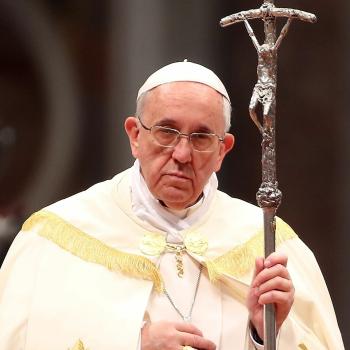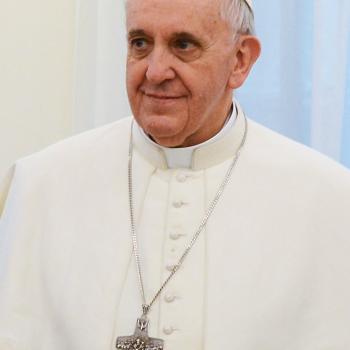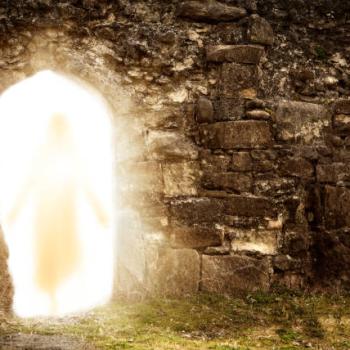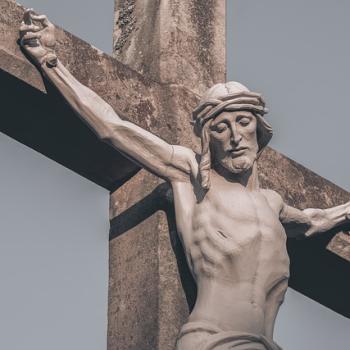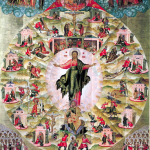Monday of the First Holy Week in Mark’s Gospel
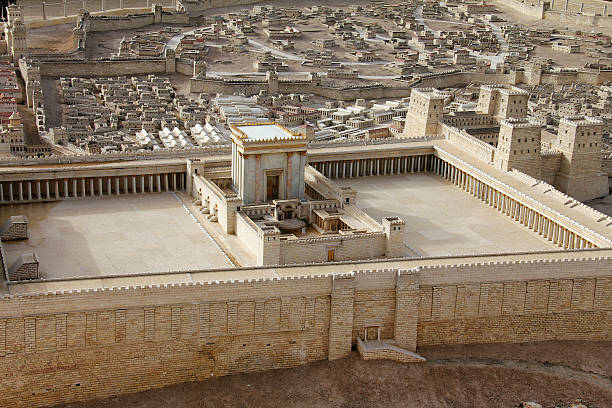
After Sunday’s (the first Palm Sunday’s) street theater, Jesus retired to nearby Bethany, but not before checking out the Temple. Probably he got no further than the outer courtyard, where he envisioned the civil disobedience he was planning for the coming day, Monday of the first Holy Week.
Now it is Monday and Jesus and friends are walking back to Bethany. They spy a fig tree a little way off the road. It reminds Jesus that he’s hungry. (Had he forgotten to eat breakfast that morning?) Approaching the tree he finds there are no figs on it. It wasn’t the season for figs. (Didn’t Jesus know that all along?) With a lapse in logic perhaps, Jesus curses the fig tree: “May no one eat of your fruit ever again!” The incident is so odd that I have to believe Mark made it up. We’ll see Mark’s point when we learn what happens to the fig tree the next day in that Holy Week.
On the way ‘up’
The small band proceeds along the road up to Jerusalem. “Up” is a key word. Everything about the Temple and its location has a kind of vertical plan, illustrating a highly stratified society. The higher you go the holier and closer to God. Jerusalem, situated on a hill, is holier than the rest of the “Holy Land,” itself holier than the surrounding Pagan lands. In Jerusalem you come to the Temple Mount, still more holy, and ascend the steps to the outer courtyard, the Court of the Gentiles.” If Jesus were to go on and up the holiness spectrum, he would reach the Court of the Women, then the Court of the (men) Israelites. This included the Levites. Beyond and above this Jesus would never go because he is not a priest, not holy enough.
This day Jesus stops within the Court of the Gentiles. There he sees a sign in three languages warning all except ritually clean Judeans that the penalty for going any higher is death. Jesus may be ritually unclean because he has been staying at the house of Simon the Leper. That’s OK. The civil disobedience he planned will happen here.
Along with Jesus, other ritually unclean individuals could gather in the outer court—bastards, eunuchs, anyone lame or not whole in body, and those too poor to pay the Temple tithe. And Gentiles, of course. The bearers of the paralytic, before Jesus cured him, would have had to leave him here.
Jesus engages in civil disobedience
The outer court is where all sorts of temple business goes on. There you buy animals for sacrifice. And there you change impure foreign money to temple coins for purchasing these sacrificial animals. It has been said that all this busy work, and perhaps shady dealings offends Jesus. The sight of it stirs Jesus to righteous and violent anger. Far from it! Jesus has all along known what goes on in this court. It’s no surprise to him. It isn’t even particularly offensive. We have no evidence that the sellers and money changers were cheating anyone.
But Jesus is righteously and violently angry. He begins to drive out the sellers and buyers in the Temple. He overturns the money changers tables and basically stops the Temple’s business. But only symbolically. Civil disobedience is like that. The Temple is a huge place; Jesus makes an impression, but a small one. Probably Temple leaders and Roman soldiers took note.
As an explanation for this attack, Mark attributes to Jesus a quote from the prophets:
Is it not written, ‘My house shall be called a house of prayer for all the nations? But you have made it a den of robbers.’
The robbers’ den
The image of a robbers’ den doesn’t – or shouldn’t – make us think of evil things going on inside the Temple. A den is where the bad guys hideout after doing their thievery somewhere else.
That’s exactly what the high and holy (and rich) classes have been doing. They reaped the benefit of an economy that regularly transferred wealth from the poor to the rich through taxes, fees, tithes, interest on loans, and foreclosures when loans couldn’t be paid off because of a string of poor harvests. As in our day, the rich get richer and the poor get poorer – a saying whose first-century equivalent Jesus once quoted and didn’t approve of. And the Temple called these wealth gatherers blessed and took its share of the accumulating riches by serving as the loan sharks’ bank.
That’s what Jesus was protesting in the Temple on that Monday of the first Holy Week. Our Bibles call it the Cleansing of the Temple. But it was more than a mere tidying-up operation as Mark’s readers learn when they get to the following day and see the end of the story of that cursed fig tree.
(This post on Monday of the first Holy Week is mostly collected from other things I have written on Jesus’ advocacy for God’s justice within the kingdoms of this world. If you find this helpful, you can read more in other posts under the titles of “The Worldly Spirituality of the Gospel of Mark” and “A More Incarnational Son of God.”)





